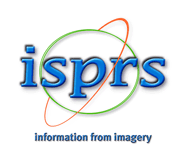Developing a Climate-Smart Web GIS App for Multi-Hazard Early Warning against Climate-Based Disaster Risks
Keywords: Climate, Climate-Smart Application, Web GIS, Multi-Hazard Early Warning, Disaster Risk Reduction
Abstract. Floods and drought are one of the most recurring and devastating natural hazards threatening life and economy. Early warning of the likely occurrence of flood and drought disaster risks and impacts could assist in decision making to support proper disaster risk responses, management and formulation of informed Climate Change adaptation and mitigation strategies for enhanced resilience and disaster risk reductions. Globally and across Africa various initiatives and innovations of multi-hazard early warning systems based on web and mobile information platforms have been developed, however, none fit in the Tanzanian and East African environment. Developing a localized multi-hazard early warning for climate related hazards is essential in reducing loss of life and damage to property. This study aimed at developing an innovative multi-hazard early warning Web based Geographical Information System (GIS) App for flood and drought disaster risks in East Africa, Case of Tanzania. We used Palmer Drought Severity Index (PDSI) and deep learning neural networks based on geospatial weather data using a convolution long-short-term memory (ConvLSTM) model to predict drought in Dodoma. Global Flood Awareness System (GloFAS) flood prediction data were streamed to show the flood occurrence forecasted for Dar es Salaam. The Web based GIS App was designed and developed using the Rapid Application Development (RAD) methodology in Microsoft .NET framework to capture and disseminate information on flood and drought disaster risks. From analysis we identified areas which are highly prone to flooding. The results were validated using observed flood points identified and mapped using the participatory approach by vulnerable community members. On the other hand, the analysis of drought conditions in Dodoma region depicts Chamwino, Bahi and Central Dodoma to be highly prone to drought risks. Thereafter, the Web-based GIS App for dissemination of climate related early warning information for flood and drought disaster risks was successfully developed. We recommend integration of GIS and Early Warning Tools into Existing Policies, Establish Monitoring and Evaluation Frameworks and further Improvement of the Developed App for enhanced Disaster Risk reductions (DRR).





